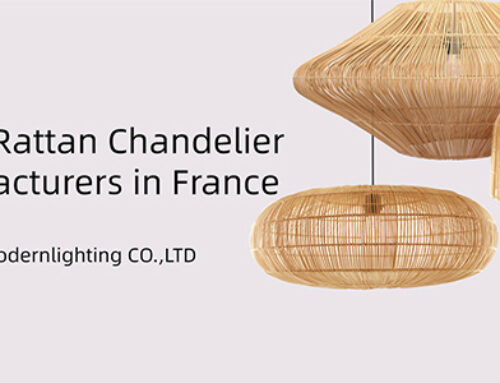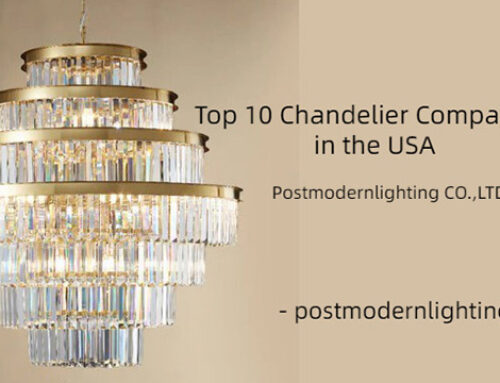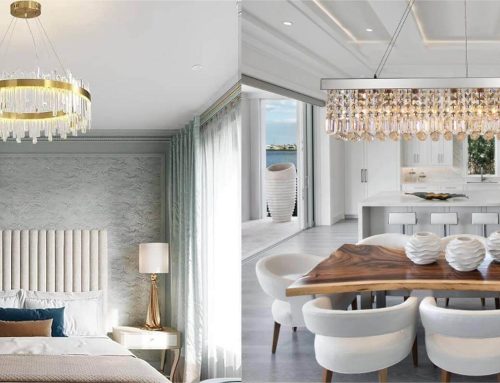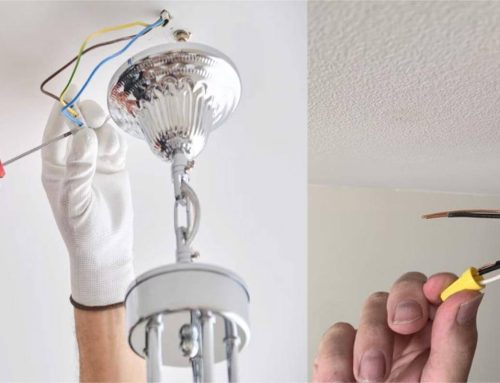Buying light bulbs may seem like an easy task, but did you know there are many factors to consider when choosing the right bulb? Chandeliers, pendant lights, and other lighting fixtures in your home require the basic construction, voltage, and wattage of different types of bulbs. So we’ve put together a comprehensive guide to help you make the right choice for a chandelier bulb.
1. Determine the type of connector or cover you need
This is the most important piece of information when choosing a new bulb – if you choose the wrong fitting or lamp cap, your bulb simply won’t fit. Still, choosing the wrong fitting or lamp holder type of bulb is one of the most common and frustrating mistakes when buying a bulb.
Both the lid and base are marked with letters and numbers. Letters indicate the type of base, while numbers indicate the diameter of the base, in millimeters (mm). There may also be a third letter to indicate whether there is one, two, or three pins.
Here are some of the most common types of covers and bases:
1) Bayonet
Bayonet base is the most common base type in the UK. These bulbs are put into the socket by pushing and twisting action and are mainly used in incandescent and CFL bulbs.
2) Tighten
Spiral lamp holders are also called “Edison” lamp holders, which is why they are marked with the letter “E”. These bases are available in a variety of sizes. In a bulb with a screw cap, two wires connect the filament to the holder, and the voltage is connected to and supplies power to the bulb.
3) Pins or nails
These bases have two narrow pins or nails. The distance between pins or pins is measured in millimeters and indicated in the basic type code.

(Another related post: How to Select the Right Size Room Chandelier?)
2. How to determine the light bulb you want
The type of bulb you need depends on the type of lamp or lamp socket you have and how you want to use the lamp. Fluorescent bulbs are ideal for places where you like bright, continuous light, such as offices and kitchens. Incandescent bulbs provide warm light, so people often use them in bedrooms and table lamps.
LED bulbs are bright and long-lasting, and some use less energy than incandescent bulbs. Smart light bulbs are ideal for those with busy lives who want to set their lights regularly or want to control them remotely, so consider how you use them before making your choice.
Choosing a chandelier bulb for your crystal fixture may sound confusing. Chandelier bulbs come in a variety of shapes, sizes, and styles. First, let me introduce you to the types of light bulbs.
1) What type of light bulb is needed?
The following are according to the types of Bulb.
#1. Incandescent light bulbs
Incandescent bulbs are the most common type of household light bulb. Styles include chandelier or candlestick bulbs, standard bulbs such as “A” or “G” and floodlights.
These bulbs have a screw-in base for easy installation. In the case of an incandescent bulb, the filament is heated and then emits light. We always recommend using a good quality clear bulb rather than a frosted bulb, as it can crack the crystal. Although incandescent bulbs are the least energy efficient, that doesn’t mean they don’t have a place in your decision-making.
#2. Halogen bulb
Halogen bulbs are technically incandescent bulbs but are more energy-efficient and durable. They have a glass casing, and the glass casing contains gas. Since skin oils can cause halogen bulbs to burn out, you should not touch the glass part of the glass with bare hands. Therefore, when you buy light bulbs, you will find that most of them are packaged in paper tubes. This can protect the safety of you and the bulbs to the greatest extent. This kind of packaging is also widely used in cosmetic paper tube packaging, mailing tube packaging, etc. Their purpose is to protect the internal products. Clear halogen bulbs are the perfect choice for many modern crystal chandeliers, ceiling lamps, and wall lamps.
#3. LED bulbs
LED light bulbs are loved by people. They are the most energy-efficient and environmentally friendly light bulbs. Over time, the savings you make on your electricity bill will eventually cover the start-up cost of the bulb. In general, good-quality LED bulbs are durable. Like everything else, quality matters. High-quality bulbs make your crystal chandelier shine.

(Another related post: Chandelier Buying Guide)
2) What shape of chandelier bulb do you need?
Now that you know the required accessories, colors, and brightness, you need to decide what shape you want the bulb to be.
If you want to replace a burned-out bulb, simply replace it in the same way. If you have new lamps or are upgrading to LEDs (which come in a variety of different shapes), you may need to choose a different bulb shape.
Each different shape offers a slightly different range and Angle of light, from the nearly 360-degree range of a GLS, globe, or golf ball bulb to the narrow beam of a spotlight. In general, the shape you choose can be based on your personal preferences and the shape that looks best in your luminaire.
Here’s a brief breakdown of the most common light bulb shapes:
#1. Bullet/torpedo type
This shape is the classic chandelier bulb that has been used for decades. As the name suggests, each bulb resembles the shape of a bullet or torpedo (thin at the ends and wide in the middle). If you buy by shape, this type of bulb usually has the shape code prefix “B”, which stands for “bullet”.
#2. Candle/cone
A candle or conical bulb usually has a rounded center that rises to a vertical point, much like the flame of a candle. Unlike many other chandelier bulb shapes, candle or conical bulbs often do not conform to precise measurements. Instead, they have different bodies and peaks, giving each bulb a more unique look. However, if you want even bulbs, you can still find candle-shaped or cone-shaped bulbs by looking for the “C” prefix in the shape code.
#3. Candle horn
The candle horn shape is similar to the conical bulb shape, but the tip of the bulb is usually curved to have a stronger Angle that is not completely vertical (hence the name). In addition, the width of the bulb is usually not as wide as that of a standard candle-shaped bulb. You can find candle corner bulbs by looking for the “CA” shape code prefix.
#4. Flame
Finally, the flame chandelier bulb shape uses uneven and irregular surfaces to give the impression of a real flame. However, the shape is usually similar to a bullet bulb, but depending on the brand and manufacturer, it can also have a greater resemblance to a candle shape. In any case, you can find a flame-shaped bulb by looking for “F” in the shape code prefix.

(Another related post: Chandelier VS. Pendant Light: What is the Difference?)
3) Consider brightness and color
Ask yourself what type of light you want. Your decision can simply be broken down into brightness (also known as watt and lumen output) and the color of the light (measured in Kelvin degrees). What’s the difference between brightness and color? Here’s a short explanation of each:
#1. Brightness (watts and lumens)
In the old days, when almost everyone’s home was filled with incandescent light bulbs, brightness was measured in watts, which was a measure of power. Watts has not been a useful measure of brightness since the advent of energy-saving light bulbs, because new bulbs require much less power to produce the same amount of light. Instead, the light output is now measured in lumens. The higher the lumens, the brighter the light.
#2. How many lumens do you need? (240V)
As a rough guide, about 400 lumens is suitable for a bed-sized lamp, while for a large-sized living room, you may need a total of 1,500 to 3,000 lumens (from the sum of all the bulbs in the room).
Now that you have decided on the brightness of the bulb, you need to decide on the color of the light.
#3. Color (Kelvin scale)
After purchasing a new light bulb, people often feel a dull feeling when they turn it on, only to see pure white or blue light, which is more like a trip to the emergency room than a warm and comfortable living room.
The color of light is measured using the Kelvin temperature scale, which is a measurement of temperature. This is why bulb manufacturers often mention “color temperature” on the packaging. The numbers you see on the side of the package indicate the color of the light emitted by the bulb.
Most people are used to the warm yellow light emitted by old-style incandescent bulbs with a temperature of 2,700 Kelvin. For comparison, midday sunlight is about 5,000k, sunset or sunrise lighting is about 2,500k, and candles are about 1,600k.
The color of light can affect everything from your mood to the color of the vegetables on your cutting board, so it’s important to get the color of light you like. Use the reference below to match the Kelvin rating to your desired color.
Kelvin rating:
- Blue light is best for reading areas, and cold white, neutral, or bright white bulbs are recommended for your kitchen or workspace. Since lighting can also be used to improve your mood and focus, it’s important to choose wisely.
- It can be introduced here that light color is measured in degrees and is called Kelvin (K). A cooler bulb will emit a soft yellow/white light, while a warmer bulb will emit a blue hue.
- The soft white has a more yellowish tone, ranging from 2000K to 3000K. This is often the color of choice for bedrooms, living rooms, and study rooms. I like the light from incandescent bulbs best.
- Warm white ranges from 3100K to 4500K, which looks fairly white and is perfect for working lighting in kitchens, bathrooms, and work areas.
- This is followed by daylight or cold white light with a color temperature range between 4600K and 6500K. It has a blue-white tone, perfect for reading. It is ideal for working lighting.
- Last but not least, the bright white color is more than 6500K with a bright blue quality, perfect for Spaces that require extremely high light output intensity.
We recommend using warm white or soft white to achieve the best light quality and twinkling effect in the crystal chandelier. The 2700k is perfect for crystal lamps. It gives off warm tones and brings out the best in the chandelier. In addition, warm white or soft white will enhance the reflection quality of the crystal.
#4. Color temperature
To make matters more complicated, each bulb has a CRI score. CRI stands for color rendering index and is a measure of a light source’s ability to accurately render different colors. In short, you want to make sure you get a bulb that makes your tomatoes look red and not a weird orange.
Traditional incandescent and halogen bulbs are close to perfect, scoring around 90 points. LED and CFL are slightly behind this, and CRI values are more likely in the mid-80s. 80 is considered an acceptable level, although like many things it depends on personal preference.

(Another related post: A Quick Guide to Chandelier Crystal Quality)
3. Why is it important to choose the right bulb for your chandelier
The following will be introduced from three points:
1) Chandeliers as the main lighting
If your chandelier is the main light source in the room, you need a bulb that can provide you with bright and useful light. Dining room chandeliers are a typical example. These fixtures are located above the dining table and usually provide most of the light in the room.
In this case, incandescent or LED (light-emitting diode) bulbs make the most sense. If the chandelier needs multiple bulbs, incandescent bulbs are a good choice. They give off a warm glow without being harsh – perfect for a cozy, welcoming atmosphere.
LEDs, on the other hand, can be brighter and come in a variety of different styles and color temperatures. Many smart LED bulbs can be customized to give you the brightness, color temperature, or color you need, which is also a good choice.
2) Chandeliers as key lighting
If you use a chandelier as a focus or auxiliary lighting source, you can consider some interesting bulb options!
A popular choice is antique light bulbs. Despite the name, these aren’t antiques. They just look old-fashioned. There are two types of antique light bulbs, incandescent and LED. They emit a warm glow that, while not as bright as a typical bulb, is enough to illuminate the nearby area. They’re perfect for kitchen islands, living rooms, rec rooms, bedrooms, or anywhere you don’t always need a master light but you still want to shine.
A big advantage of incandescent and LED antique bulbs is that they are compatible with dimmers, perfect for creating and adjusting accent lighting anywhere in your home. Another great advantage of antique light bulbs? They come in a variety of eye-catching shapes, including globes and flames, so they look cool and add a serious touch.
3) Chandeliers with cover lighting
Many chandeliers are designed with exposed bulbs, making them ideal for incandescent or LED bulbs. Other types of light bulbs, such as compact fluorescent (CFL) bulbs, look less aesthetically pleasing and are more intense than other types of lighting – although they also have their uses.
If your chandelier has a covering light (such as an opaque glass or linen lampshade), this opens up even more possibilities. You can use incandescent or LED bulbs, but CFL has also become an option. They work well in chandeliers with fans and blackout lights, especially in kitchens where more intense light is needed. When covered, the strength diffuses. On top of that, CFLS is more energy efficient than incandescent bulbs. But if efficiency is a selling point, then you can’t beat less!
(Another related post: Hotel Lobby Chandeliers: A Full Guide)
4. Conclusion
Hopefully, this guide has provided you with the tools you need to buy light bulbs. But all in all, experimenting is the best way to create a personal space because each room has its unique requirements. Spend some time replacing different bulbs and watching how your space changes.






Leave A Comment